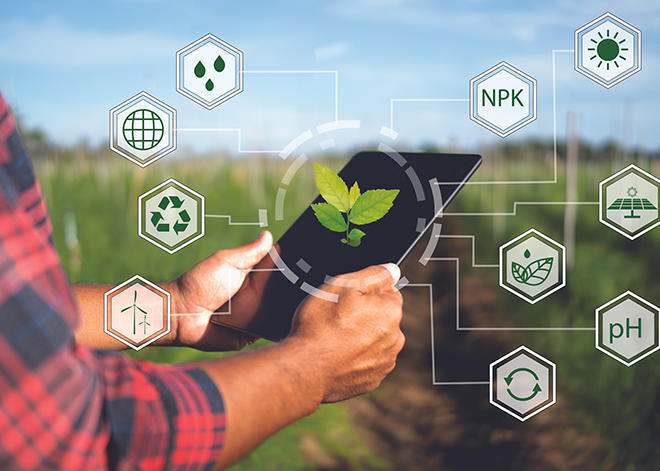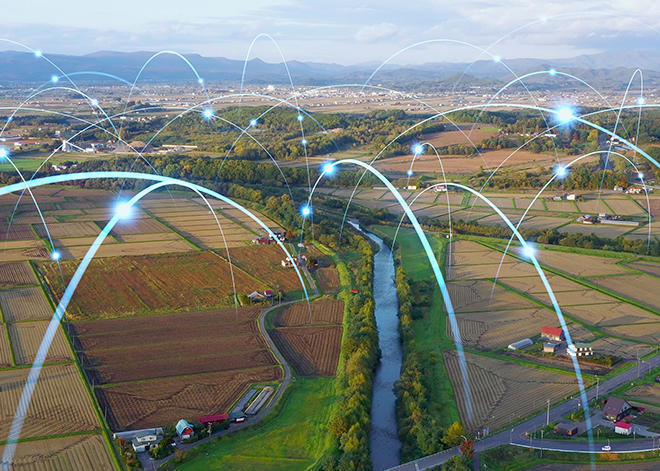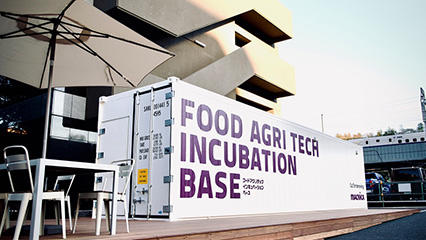The world population is expected to reach 8.5 billion by 2030. According to the Ministry of Agriculture, Forestry and Fisheries' estimate of the size of the food and beverage market, the size of the food and beverage market in the world in 2030 will be 1,360 trillion yen. This is about 1.5 times the figure in 2015 (890 trillion yen).
In order to respond to these population increases and the increase in food demand, not only farmers but also various industries including secondary and tertiary industries will work together to create highly productive sustainable agriculture and food and beverages. It is necessary to aim for the realization of related industries.
Technological innovation in food and agriculture,“food agritech,”is now expected to be a solution to this problem.
Five issues in food and agriculture looking ahead to 2030
Issue (1) Labor shortage and shortage of successors in agriculture
In addition to the shrinking working population due to the declining birthrate and aging population, there are various factors such as the 3k image (hard, dirty, dangerous) of agriculture, not knowing how to start, and anxiety about profitability. The problem is that the number does not increase.
In addition, the limited means of funding and material procurement in agriculture may also be a factor.
Issue (2) Imbalance in training know-how
Stable production, mass production, and quality assurance of agricultural products are guaranteed by the experience and know-how of skilled workers. The reality is that this know-how is often not converted into data or verbalized.
Acquisition of this know-how is a very high barrier for newcomers to agriculture.
Challenge (3) Declining food self-sufficiency rate and increasing food loss
The Ministry of Agriculture, Forestry and Fisheries has set a goal of raising the food self-sufficiency rate on a calorie basis from 37.17% (2020) to 45% (2030).
The decline in the food self-sufficiency rate is due to global warming and labor shortages turning former food-exporting countries into importing countries, as well as the decrease in the amount of food distributed due to trade restrictions stemming from the global situation. It has been pointed out that there is a risk that
On the other hand, loss occurs in each process up to the consumption of produced and imported food. The Japanese government is aiming to halve food loss from food-related businesses and households by FY2030 compared to FY2000.
Issue (4) Climate change
In outdoor cultivation, it is impossible to control temperature and sunlight fluctuations, so the yield varies greatly depending on the climate.
In addition, depending on the variety, there are cases where it depends only on outdoor cultivation in specific areas, increasing the risk of wind and flood damage.
Challenge (5) Reduction of fossil fuels and chemical fertilizers to achieve carbon neutrality
The Japanese government has set a goal of reducing greenhouse gas emissions by 46% by 2030 to achieve carbon neutrality by 2050.We also aim to reduce chemical pesticides by 50% and chemical fertilizers by 30%.
In addition, geopolitical risks and accompanying changes in financial markets could cause problems in the availability of energy sources such as oil and gas, which could lead to rising costs.
Efficient use of energy and reduction of chemical fertilizers are important measures that contribute to both carbon neutrality and increased costs.
Macnica 's food agritech solutions
Based on these social issues, we have set "creating a sustainable global environment" as one of our company's material issues (important issues), and we are working to create a society in which a sustainable and stable food supply will be provided in the future. We would like to contribute to the realization of
Through the provision of cutting-edge semiconductors and IT products, we will further expand the scope of creation of the foundation for industry and technological innovation, and in the future, through the food and agritech business, we will realize a stable supply of food by strengthening the production base. increase.


Improving work efficiency with AI and robotics
-
Quantification of know-how using AI
By having AI perform analysis based on data collected by sensors, anyone can immediately put into practice training know-how that until now relied on the experience of experts.
-
Work efficiency, automatic harvesting
We provide robotics to compensate for labor shortages, such as harvesting robots and exoskeletons.


Stable supply of food and proper amount of ordering
-
Smart farm using AI/IoT
By integrating various technologies such as sensors, LEDs, AI, robots, and cloud services, we will realize smart farms that are highly efficient and capable of mass production, and provide solutions that enable stable and predictable production.
-
Predicting the appropriate order amount of ingredients according to the menu sales volume
We make sales forecasts using AI and provide solutions that both reduce food loss and minimize sales opportunities.


A recycling-oriented society that utilizes renewable resources
-
Production using highly efficient energy
We provide solutions that can significantly reduce the operating costs and power consumption of renewable energy.
-
Circulation by food residue treatment
We provide solutions that can effectively utilize food residue from each process, from agricultural production to distribution, processing, and sales, by drying, bioprocessing, etc., for fertilizer and feed.
Solutions currently available
FOOD AGRI TECH INCUBATION BASE: Connecting the memories of "food" and "agriculture" to the future

The Food Agri Tech Incubation Base is an open innovation space that creates new value beyond the boundaries of businesses and companies in order to connect the memories of food and agriculture to the future.
It is located a 10-minute walk from Shin-Yokohama Station, next to Macnica 's head office.
It is possible to conduct tours of the wasabi plant factory for those considering starting farming, and to conduct PoC on the theme of environmentally controlled agriculture for external partner companies.
There is a wooden deck around the Food Agri Tech Incubation Base, which can be used for casual meetings, parties, and local interaction.
A container-type plant factory that protects the phantom wasabi - Agricultural DX using environmentally controlled agriculture -

While demand for real wasabi is increasing overseas, domestic wasabi production has been declining year by year, and market prices for wasabi, let alone exports, have continued to soar.
In this article, we will introduce the "Wasabi Cultivation Module," a small-scale plant factory that realizes "controlled environment agriculture" inside a 40-foot container that utilizes cutting-edge technology to aim for labor-saving, precision, and high quality, in order to solve the problems of wasabi cultivation and pass on a rich food culture to the future.
We will improve your problems with Agriculture DX! Platform service for greenhouse horticulture

Using a sensor platform as a core, we will propose economic rationality including forecasting yields, labor support and visualization, forecasting required manpower, optimal allocation, and numerical modeling of business operator training know-how.
We also provide crop cultivation consulting services so that newcomers can grow crops on par with experts.



